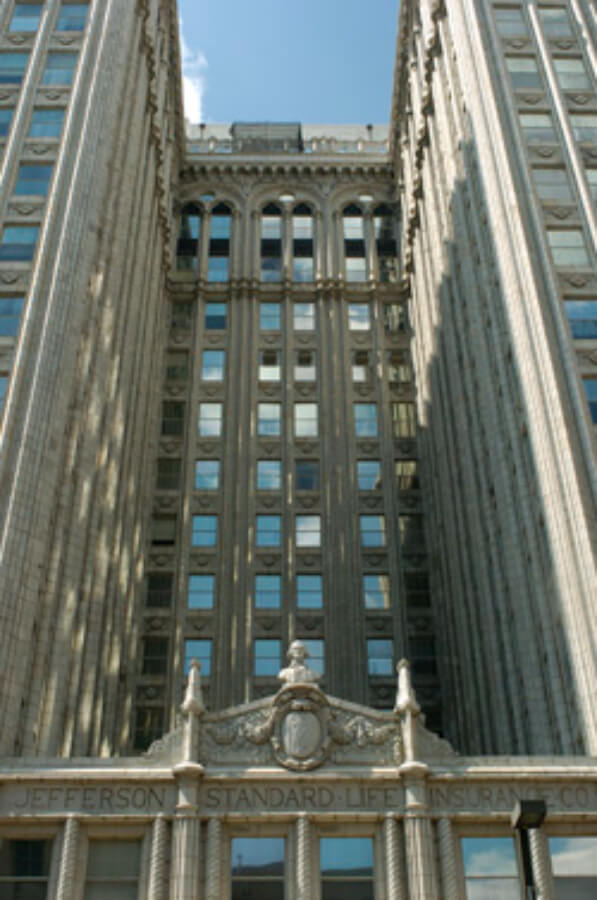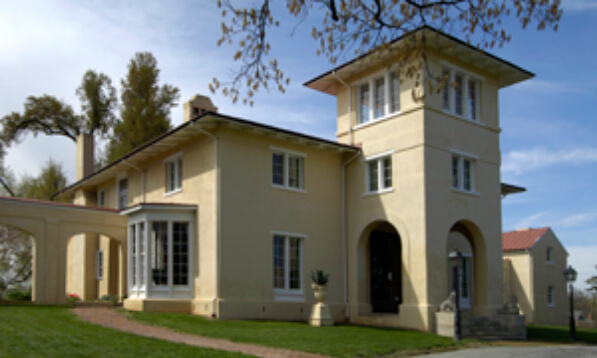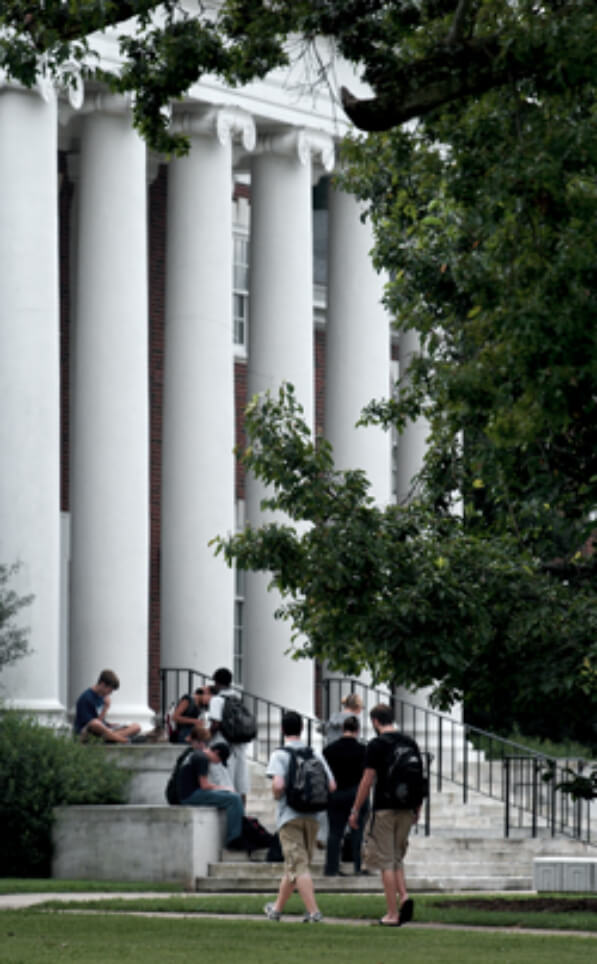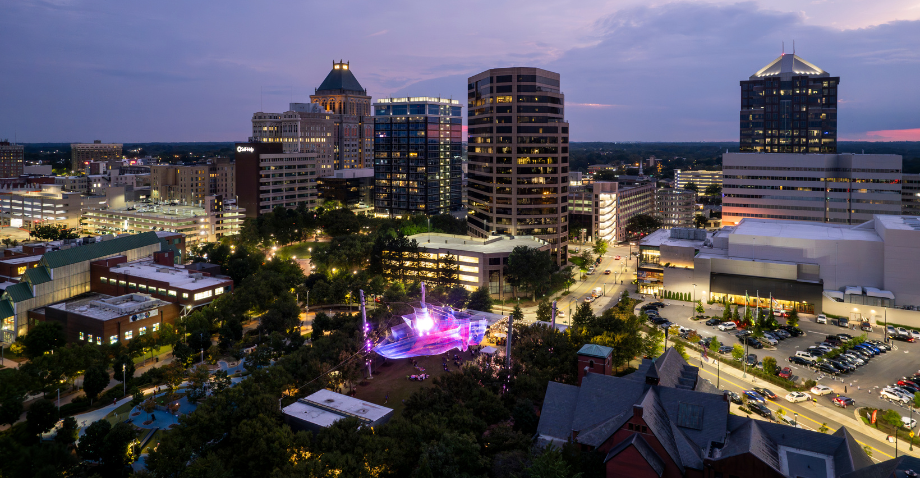
Greensboro is blessed with architecture and landscaping by iconic American designers – boasting more buildings by renowned architects than many North Carolina cities. Most of the work was done early in the 20th century, when Greensboro’s affluent citizens hired some of the best designers from New England and the northern United States. Local architects were also included in the creation of the beautiful city.
Business

- Charles Hartmann, a northern transplant who arrived in 1918, designed the 17-story Jefferson Standard Building (now Lincoln Financial) at Elm and Market streets in the early 1920s. During the era, it ranked as the tallest structure between Washington and Atlanta.
- Besides the Jefferson Building, Hartmann also designed the 12-story Guilford Building and the now demolished 13-story King Cotton Hotel.
- The famed international architect Walter Gropius, a founder of the modernist Bauhaus architecture and art movement in pre-World War II Germany, designed the Container Corporation of America Building at 2600 E. Market St.
- In the early 1960s, Edward Lowenstein designed the building that was originally the city’s main library and is now Elon University Law School. Lowenstein commissioned the founder of the UNC Greensboro's art school, Gregory Ivy – the father of modernist art in North Carolina – to create the elaborate design work above the library entrance.
- In the late 1960s and early 1970s, Argentine architect Eduardo Catalano designed the city-county government building in a style known as Brutalist Modern architecture.
Residential

- In the early 1840s, America’s top architect during that time, Alexander Jackson Davis of New York City, redesigned Blandwood Mansion downtown into the first Italia Villa structure in America. He also designed the state capitol in Raleigh. Charles Hartmann also built residences in the Fisher Park neighborhood, as well as the Country Club Apartments on North Elm Street. Both are listed on the National Register of Historic Places.
- In 1909, John Nolen, who headed a national landscaping firm in Cambridge, Mass., created the Irving Park neighborhood. The houses and mansions border the neighborhood centerpiece, the Greensboro Country Club golf course, which was founded the same year as the neighborhood.
- When Irving Park was expanded, Robert Cridland of Philadelphia completed the job. It has remained the city’s premier neighborhood for more than 100 years. Cridland also designed the grounds of A.W. McAlister’s mansion on Country Club Drive, the still-magnificent courtyard of the Country Club Apartments (now condos) and the enormous grounds of what was from 1924 to 1990 the headquarters of Pilot Life Insurance Company in Sedgefield.
- Charles Barton Keen, a Philadelphian well-known for creating estates for the wealthy, designed at least a half dozen homes in Irving Park. Three homes display his stucco and green trademark and resemble his pièce de résistance, the RJ Reynolds’ Reynolda House in Winston-Salem.
- In the early 1920s, young draftsman Lorenzo Winslow designed the Tudor-style Irving Park Manor apartments and the Spanish mission-style Windham Court Apartments on Tate Street. Later, Winslow moved to Washington, D.C., and eventually became the architect of the White House.
- Edward Lowenstein introduced modernism to the city after marrying into the Cone family after World War II. Many modernist houses, including Lowenstein’s own, are scattered throughout Irving Park and other neighborhoods.
Schools

- Hartmann designed Grimsley and Dudley High Schools, both opening in 1929. Grimsley was North Carolina’s first public school to cost more than $1 million. The school resembles a college campus with its three main buildings arched around a vast lawn sweeping down to Westover Terrace. He also designed the imposing Lindley Elementary School.
- Greensboro native Harry Barton designed 18 buildings on the UNC Greensboro campus in 1927, including the still-used Aycock Auditorium. Perhaps his best-known design came in 1918 with the County Courthouse on the 300 block of West Market Street.
Churches
Pennsylvania-born S.W. Foulk designed the Richardson Romanesque-style West Market Street United Methodist Church.
Harry Barton teamed with New York architect Hobart T. Upjohn on First Presbyterian Church, which opened in 1927 in Fisher Park. Upjohn, son of renowned architect Richard Upjohn, also designed Greensboro’s Temple Emanuel, Holy Trinity Episcopal Church, and Grace United Methodist Church.

